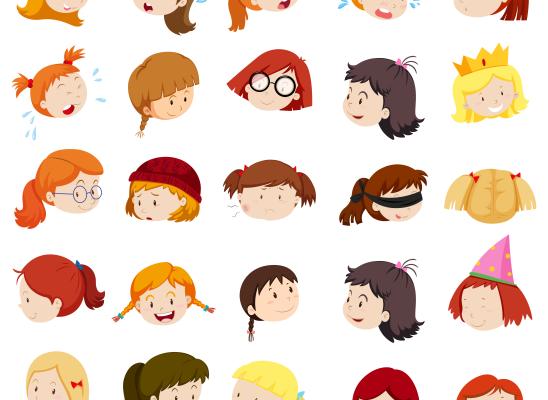
Online test
Find out the severity of your symptoms with this free online test
The idea that there’s a connection between trich and sensory processing is not new. In 2002, Dr. Fred Penzel suggested that there was a link between the body’s sensory regulation system and trichotillomania. His Stimulus Regulation Model of Trichotillomania theorized that that people pull their hair in response to some sensory need that the pulling satisfies. Trich is not the same a sensory processing disorder but are there things we can learn about sensory processing that can help to better understand and manage trich? In a recent trichstop.com webinar, Dr. Vladmir Miletic takes a closer look at sensory processing and its relationship to trich and other BFRBs.
Where’s the Research?
Dr. Miletic notes that in his search for relevant research for the webinar, he found that while there seems to be anecdotal evidence, there is little research that specifically addresses trich and sensory processing. Research does support the idea that there are sensory components to trich, but it is not considered a sensory processing disorder.
A related topic that Dr. Miletic discusses is that of grooming. While grooming is not the same thing as trich or other BFRBs, they are not completely unrelated.
What Is Grooming?
Grooming is a behavior we see in both animals and humans, although the function is quite different. Animals groom themselves to maintain the health of their skin or fur (e.g., removing dirt, insects, stickers, etc.)
For contemporary humans, grooming is hygienic, but it is also done for social and psychological reasons. We learn about expectations for grooming from our larger culture as well as from our family members through both verbal and non-verbal means. We learn values and expectations from those around us. We develop ideas and images about what is considered attractive from what we see and what we learn from others. From all of this information, we develop an image of ourselves and form our grooming behaviors. It's a process that happens over time, from generation to generation.
Grooming plays a role in our psychological well-being too. When our grooming meets what is socially expected or the image we have, we feel good about ourselves. We want to fit in with whatever social groups matter most to us. As you get older, those may change over time. When our grooming doesn’t match the image we have or think we “should have”, it can create feelings of distress. How do we process that?
Processing Our World
We interact with our world using all our senses. They provide us with the information we need to make sense of our surroundings and experiences. Sensory processing (also known as sensory integration) is the way the brain receives, interprets, and responds to this information. Our senses can affect our thoughts, feelings, and behaviors.
Dr. Miletic notes that while problems with sensory processing are well-recognized, there is not an official medical diagnostic category for it. There is some discussion as to whether problems with sensory processing are symptoms of other disorders or represent a distinct disorder.
Problems of sensory processing can be viewed along three dimensions:
- Problems with modulation (e.g., over responsivity, under responsivity, seeking or craving)
- Sensory-based motor disorder (e.g., dyspraxia – problems with coordination)
- Problems with sensory discrimination (recognizing the different qualities of input, e.g., do you have a dime or a quarter in your pocket)
We process in lots of ways. Dr. Miletic stresses the importance of recognizing how you process sensory input. For example, some people may find loud noises particularly distressing or texture might be an issue. A common example of that might be tags in clothing. When it comes to hair pulling, you might find a certain texture of hair that you are over responsive to and that excites the need to pull. Dr. Miletic suggests that sensory discrimination might play a role too. A hair that feels different might be misinterpreted as a hair that needs to be pulled.
While there is a lot of information on managing sensory processing issues in other circumstances, how effective those strategies are is not clear. And, there seems to be little information specific to sensory processing and hair pulling.
What Can You Do To Manage The Sensory Component Of Hair Pulling?
Despite the lack of information, Dr. Miletic suggests that there are things you can do to manage the sensory aspects of hair pulling and much of those strategies may be things that are already known to be helpful for hair pulling.
If satisfying a sensory need is the goal, Habit Reversal Training (HRT) may be an option. The Competing Responses component is about finding alternative behaviors to pulling. By finding responses that satisfy the same kinds of sensory needs, it may alleviate the need for pulling. For example, with HRT you may be able to finding textures that are similar to (probably not the same as) the sensory stimulation that pulling gives. Some of the many possibilities might be:
- Sticky materials – slime, silicon balls, dry glue
- Surfaces – worry stones with varying textures, wood, a piece of fabric
- Cool/warm competing responses
Dr. Miletic recommends that instead of randomly trying things to first consider what sensory need it is that you’re trying to replace. He suggests then taking some time with items and see what you find satisfying. In the webinar, he shares a number of ideas for that process.
Other approaches that he recommends include:
- Learning to tolerate stimulating sensations through gradual exposure
- Learning to tolerate the discomfort/craving
- Relying on stimulus control (e.g., gloves, hair care)
He notes that Acceptance and Commitment Therapy (ACT) can be especially helpful when learning tolerance. Grounding and breathing exercises can help you to manage the urges.
In the webinar, Dr. Miletic offers lots of examples and suggestions for using the strategies he recommends. Change takes time and its important to find what works for you. The good news is, you don’t have to go it alone and there are resources to help.
To see the entire webinar, visit the Trichstop.com YouTube channel at https://www.youtube.com/watch?v=oK9eFCdJyfQ
Want to know more about hair pulling and what you can do? Visit Trichstop.com to learn more about hair pulling, treatment, and resources. You can also subscribe to the Trichstop.com newsletter and subscribe to the YouTube channel to receive notifications about upcoming webinars.
Online test
Find out the severity of your symptoms with this free online test
Start your journey with TrichStop
Take control of your life and find freedom from hair pulling through professional therapy and evidence-based behavioral techniques.
Start Now



